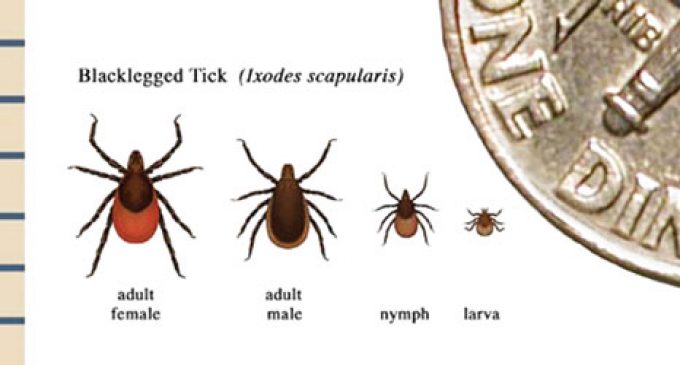Tick Tips

Tick-borne illnesses, including Lyme disease, Rocky Mountain Spotted Fever and others, pose a special health threat to children, particularly during the peak tick-activity months of June and July, said Marcia E. Herman-Giddens, child and family health consultant and adjunct professor at the Gillings School of Global Public Health at the University of North Carolina at Chapel Hill.
“Children are at special risk for tick bites because they like to play outside, and they depend on adults to take precautions for them such as ensuring they wear long pants tucked into their socks, and putting on insect repellant,” said Herman-Giddens. They also like to play with family pets, which may bring in ticks from the outdoors, she added.
The national Centers for Disease Control and Prevention reported that North Carolina cases of Lyme and RMSF have increased over the past three years, to 127 and 598, respectively, in 2012. But many cases of tick-borne illnesses do not get reported, Herman-Giddens emphasized, even though they are becoming more common. Wake, Guilford and Haywood counties have been declared by the CDC as endemic for Lyme disease, meaning the illness is firmly established there.
Fatalities are rare, but between 1999 and 2010, North Carolina led the nation in the number of deaths from Rocky Mountain Spotted Fever (now called Spotted Fever Rickettsiosis) – nine – according to the CDC. A Black Mountain, N.C., child’s recent death was blamed on RMSF from a tick bite.
Ticks hitch rides on young human hosts via bare heads, feet, arms or legs and attach themselves to areas that may be difficult for children themselves to inspect closely, such as the scalp, groin or buttocks. The arachnids – ticks are not insects, but part of the eight-legged spider family– are well-engineered to make a meal of their hosts’ blood, first injecting an anesthetic into the skin so the bite is painless. Then, their barbed mouths and the chemical cement they secrete keep them well-anchored to human skin and difficult to remove, Herman-Giddens said.
“Children may try to take off ticks with their bare hands, which can also expose them to the illnesses ticks carry,” Herman-Giddens warned. “They should be taught to get adult help if they find an embedded tick.”
She described the following process to remove a tick as safely as possible: Use only narrow-tipped tweezers, gripping the tick as close to the skin as possible and slowly pulling it away, then clean the bite area thoroughly. Tape the tick onto an index card, which kills it but still makes it available should later identification be needed, and record the date and the part of the body on which the tick was found.
Monitor the child for 30 days for rashes and/or fever or flu-like symptoms such as muscle aches or headaches, she added. If any symptoms occur, take the child immediately for medical care.
At the site of the bite itself, there may be itching, redness and some swelling, though this varies with the kind of tick. There also may – or may not – be a rash.
“Rashes can be tricky,” said Herman-Giddens. “There may be no rash at all, but no rash does not mean no illness.”











